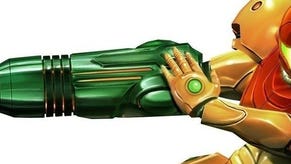Metroid: Other M
Morph or your money.
The tools you're given to fight the horde are decent as well: important stuff, as Team Ninja has really dialled up the combat. The standard lock-on is limited in range, but does the job once you distinguish how far you can reasonably push it, while the developers have worked genuine wonders in utilising the Wii remote's traditionally arthritic D-pad for both general movement and a series of last-minute dodges and feints.
A nice range of brutal finishers throw in a little combat flair, and the control scheme's one potential sticking point – you play most of the game with the remote on its side but need to switch to pointing it at the screen when you want to fire missiles – is something that takes some getting used to, but will eventually click. Once you've mastered it, in fact, and you're juggling between auto-targeting, close-up melees, and then a quick, risky missile up the snout of any downed foes, it feels wonderful.
The fighting schedule very occasionally seems like it's taking the place of proper level design (and some of the enemies outstay their welcome) but for the most part, Other M adds real style to Samus' traditionally rather utilitarian arsenal. It also allows the developer to unleash a near-endless parade of gratuitously creative bosses to fit in alongside some devious puzzles.
If there's a casualty in this approach, it's the way that the setting and story in Metroid games traditionally tend to dovetail. If you were a fan of the smart narrative archaeology of the Retro games, where the environment was left, for the most part, to speak for itself, bad news: that's almost entirely gone here, with scanning relegated to set-piece moments that feel like hidden object games, and the plot throbbing forth in globs, mainly via cut-scenes, heavy-handed exposition, and that inane rambling from Samus.
Her stilted, tranquilised vocal performance goes a long way towards destroying the bounty hunter's hard-won air of mystery, and while this is not a huge problem in itself, the clumsiness of Other M's scene-setting and characterisation eventually erodes a little of the texture of the rest of the Metroid universe. The Magmoor Caverns and Phendrana Drifts from Metroid Prime managed to step beyond their fire and ice branding and feel like genuine places; their equivalents in Other M tend to come across as nicely-built videogame levels at best, and sets for the future's dumbest soap opera at worst. The game's corridors and closets are still densely packed with puzzles and secrets and unexpected Morph Ball speedways, but that old sense of genuine discovery is slightly diminished.
These are pretty minor gripes, however, particularly when you're in the presence of a character that always expresses herself best through her moves rather than her speech, and the occasional fumbling by Team Ninja can't take away from its otherwise astonishing achievement. Guess what? The unlikeliest of developers has created a game that manages to encapsulate huge chunks of the series' traditions, even as it pushes it onwards in a slick new direction. Metroid has spliced its genes once again, and the results are typically fascinating.



